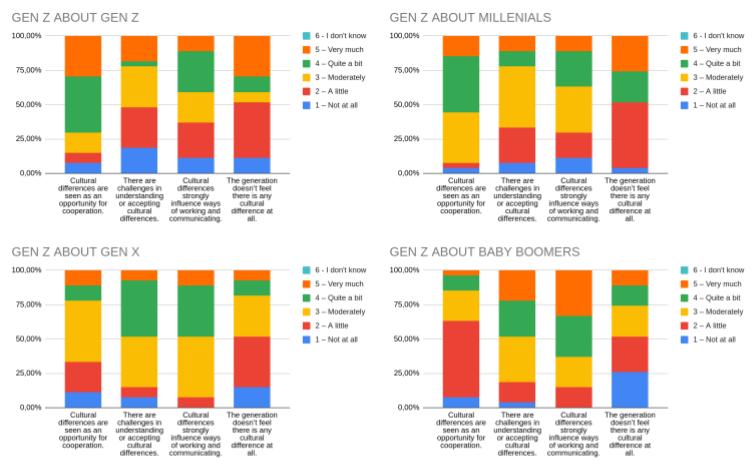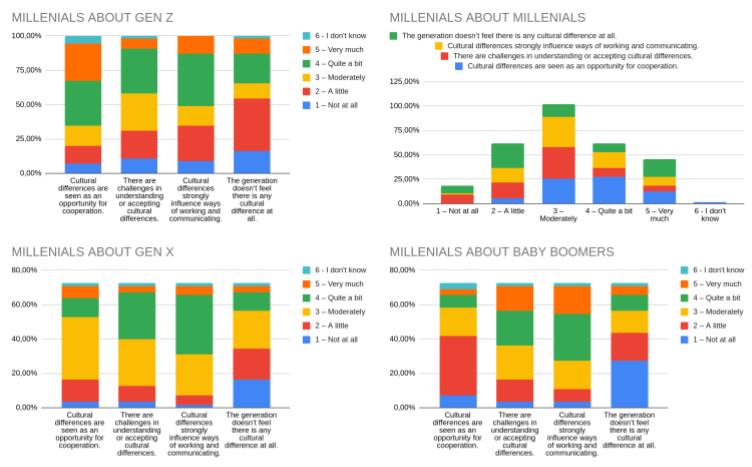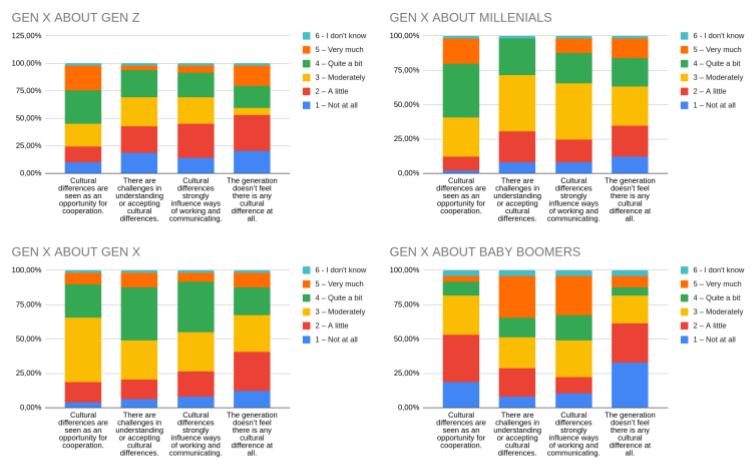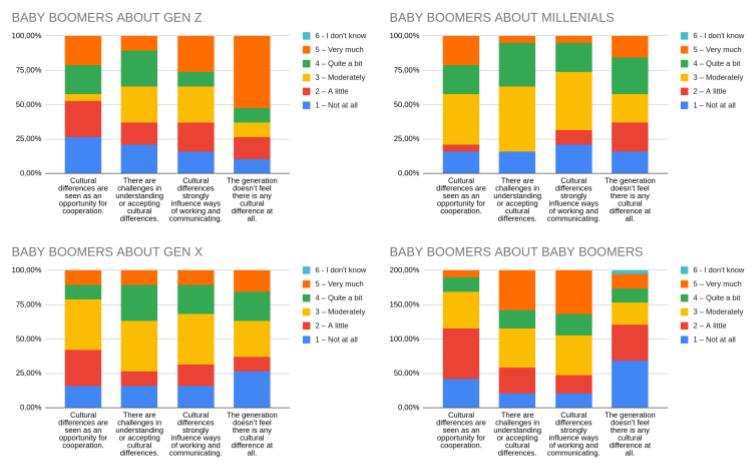13. How do you think different generations perceive cultural differences in the work environment? Please rate the following statements for each generation. Enter values between 1 and 5 (1- none and 5- very appropriate)

This question asks participants to rate how, in their opinion, different generations perceive cultural differences in the work environment. For each generation, respondents are asked to rate the appropriateness of four specific statements on a scale from 1 (not at all appropriate) to 5 (very appropriate). The statements evaluated are:
- Cultural differences are seen as an opportunity for cooperation.
- There are challenges in understanding or accepting cultural differences.
- Cultural differences strongly influence the way of working and communicating.
- The generation does not perceive any cultural difference.
This question aims to highlight the level of awareness, openness, and potential difficulties that each generation attributes to itself and to others, providing useful insights into stereotypes, biases, or awareness that may affect intergenerational and intercultural collaboration.

The data analysis shows that:
- Younger generations, such as Gen Z and Millennials, tend to perceive themselves and other generations as relatively open and aware of cultural differences, with average scores ranging from 3.5 to 4.7.
- Gen Z recognizes good cultural openness especially in Millennials and Gen X but perceives less sensitivity among Baby Boomers.
- Millennials rate themselves very positively and acknowledge good openness in Gen X, while viewing Gen Z as still developing and Baby Boomers as less culturally open.
 Gen X rates itself positively and gives high scores to Millennials, while perceiving Baby Boomers as less open culturally.
Gen X rates itself positively and gives high scores to Millennials, while perceiving Baby Boomers as less open culturally.

- Baby Boomers show a more critical self-perception but recognize greater awareness and openness toward cultural diversity in younger generations, with more moderate ratings toward Gen Z.
These results highlight generational differences in perceptions of cultural diversity, which can influence collaboration dynamics and underline the need for targeted training interventions to overcome stereotypes and promote greater inclusion.
This post is also available in: German Italian Polish Portuguese (Portugal)







